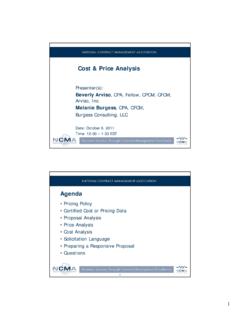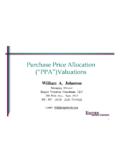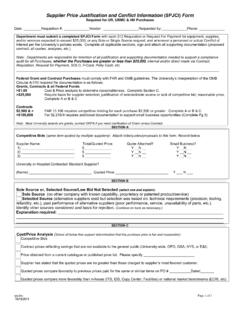Transcription of Bounded Rationality - Die Off
1 February 2001 ISBN 0-262-07214-9 377 pp. (CLOTH) Out Of Print Other Editions Paper (2002) Series Dahlem Workshop Reports Related Links Dahlem Workshop Homepage Contributor List < BACK Bounded Rationality The Adaptive Toolbox Edited by Gerd Gigerenzer and Reinhard Selten List of Participants 1 Rethinking Rationality 2 What is Bounded Rationality ? 3 The Adaptive Toolbox 4 Fast and Frugal Heuristics for Environmentally Bounded Minds 5 Evolutionary Adaptation and the Economic Concept of Bounded Rationality -- A Dialogue 6 Group Report: Is there Evidence for an Adaptive Toolbox? 7 The Fiction of Optimization 8 Preferential Choice and Adaptive Strategy Use 9 Comparing Fast and Frugal Heuristics and Optimal Models 10 Group Report: Why and When Do Simple Heuristics Work?
2 11 Emotions and Cost-benefit Assessment: The Role of Shame and Self-esteem in Risk taking 12 Simple Reinforcement Learning Models and Reciprocation in the Prisoner's Dilemma Game 13 Imitation, Social Learning, and Preparedness as Mechanisms of Bounded Rationality 14 Decision Making in Superorganisms: How Collective Wisdom Arises from the Poorly Informed Masses 15 Group Report: Effect of Emotions and Social Processes on Bounded Rationality 16 Norms and Bounded Rationality 17 Prominence Theory as a Tool to Model Boundedly Rational Decisions 18 Goodwill Accounting and the Process of Exchange 19 Group Report: What is the Role of Culture in Bounded Rationality ? Subject Index Name Index 1 Rethinking Rationality Gerd Gigerenzer1 and Reinhard Selten2 Center for Adaptive Behavior and Cognition, Max Planck Institute for Human Development, Lentzeallee 94,14195 Berlin, Germany 2 Juridicum, University of Bonn, Adenauerallee 24-42, 53113 Bonn, Germany Visions of Rationality do not respect disciplinary boundaries.
3 Economics, psy-chology, animal biology, artificial intelligence, anthropology, and philosophy struggle with models of sound judgment, inference, and decision making. These models evolve over time, just as the idea of Rationality has a history, a present, and a future (Daston 1988). Over the last centuries, models of Rationality have changed when they conflicted with actual behavior, yet, at the same time, they provided prescriptions for behavior. This double role to describe and to pre-scribe does not map easily onto a sharp divide between descriptive and nor-mative models, which plays down the actual exchange between the psychological and the rational (Gigerenzer et al. 1989). Herbert Simon's notion of Bounded Rationality was proposed in the mid-1950s to connect, rather than to oppose, the rational and the psychological (Simon 1956).
4 The aim of this book is to contribute to this process of coevolution, by inserting more psychology into Rationality , and vice versa. This book, however, cannot and will not provide a unified theory of Bounded Rationality . Rather, its goals are (a) to provide a framework of Bounded rational-ity in terms of the metaphor of the adaptive toolbox, (b) to provide an under-standing about why and when the simple heuristics in the adaptive toolbox work, (c) to extend the notion of Bounded Rationality from cognitive tools to emotions, and (d) to extend the notion of Bounded Rationality to include social norms, imitation, and other cultural tools. To reach these goals, this book adopts a broad interdisciplinary perspective. Bounded Rationality needs to be, but it is not yet, understood.
5 Before we look into the future of models of Rationality , however, let us have a glance back into the past. 2 Gerd Gigerenzer andReinhard Selten THE RATIONAL AND THE PSYCHOLOGICAL The Aristotelian distinction between the realm of demonstrative proof (that is, the things people were absolutely certain about, such as matters of mathematics and religion) and that of mere probable knowledge has shaped millennia of Western thought. The empire of demonstrative proof and certainty, however, narrowed in Europe after the Reformation and the Counter-Reformation. In the mid-17th century, a new and more modest standard of reasonableness emerged that acknowledged the irreducible uncertainty of human life. God, as John Locke (1690/1959) asserted, "has afforded us only the twilight of probability.
6 " The theory of probability that emerged at that time became the major guide for reasonableness. Its birth-year has been dated at 1654, when Blaise Pascal and Pi-erre Fermat exchanged letters about gambling problems (Hacking 1975). The initial definition of reasonableness was to choose the alternative that maximizes expected value (in modern notation, IpjVj, where/?; and vt are the probability and value, respectively, of the z'th consequence of a given alternative). Pascal's wager illustrates that this newly conceived Rationality was not only a cognitive revolution, but a new form of morality as well. Pascal pondered on whether to believe in God or not. He reasoned that even if the probability that God exists were small, the expectation is infinite: infinite bliss for the saved and infinite misery for the damned.
7 Therefore, Pascal argued that rational self-interest dic-tates that we forego our certain but short-lived worldly pleasures and bet on the uncertain but infinite prospect of eternal salvation. The new brand of calculating Rationality replaced faith with moral expectation. The definition of reasonableness in terms of expected value soon ran into problems: it conflicted with the intuition of educated people. The first in a series of conflicts was the so-called St. Petersburg paradox, based on the following monetary gamble. Pierre offers Paul a gamble in which a fair coin is tossed. If the coin comes up heads on the first toss, Pierre agrees to pay Paul $ 1; if heads do not turn up until the second toss, Paul receives $2; if not until the third toss, $4, and so on.
8 What is the fair price Paul should pay to play this game? The fair price is defined by the expected value, Iptvi9 which is the sum of all possible outcomes (values) times their probability. This sum is 1/2 x $ 1 + 1/4 x $2 + 1/8 x $4 + .. + 1/2"x$n + .., which is infinitely large. However, reasonable people offer only some $5 to $ 10 to play this game rather than a very large amount of money. This discrepancy was labeled a paradox, the "St. Petersburg paradox," not be-cause it is a logical paradox, but because the mathematical theory was so at odds with the dictates of good sense. The theory of Rationality was thought of as a de-scription of human behavior as well as a prescription for it. To resolve the dis-crepancy between theory and good sense, Daniel Bernoulli proposed changing the theory: from maximizing expected value to maximizing expected utility, that is, through incorporating the psychological facts that money has diminishing re-turns (which he modeled by a logarithmic function between monetary value and Rethinking Rationality 3 utility) and that this utility depends on the amount of money a person already has (Bernoulli 1738/1954).
9 The St. Petersburg paradox was the first in a series of monetary gam-bles such as the Allais paradox and the Ellsberg paradox in the 20th cen-tury that led to changes, or at least to proposed changes, in the theory of Rationality . By the early 19th century, it was realized that there are several defini-tions of expectation, not just one ( , arithmetic mean, geometric mean, and median; as well as several measures of variability around the expected value to model risk). This ambiguity was perceived as a defeat for the program to arrive at the one mathematical definition of reasonableness, and became one of the rea-sons why the program was abandoned by most mathematicians around 1840 (Daston 1988). The program, however, was revived in the mid-20th century.
10 Like Bernoulli, many contemporary researchers attempted to resolve discrepan-cies between description and prescription by tinkering with the utility or proba-bility function, while at the same time retaining the ideal of maximization or optimization. In this book, we pursue a more radical alternative to connect the rational with the psychological. The theory of Bounded Rationality , as we understand it, dis-penses with optimization, and, for the most part, with calculations of probabili-ties and utilities as well. Bounded Rationality In the 1950s and 60s, the Enlightenment notion of reasonableness reemerged in the form of the concept of " Rationality " in economics, psychology, and other fields, usually referring to the optimization (maximization or minimization) of some function.




